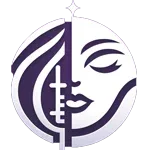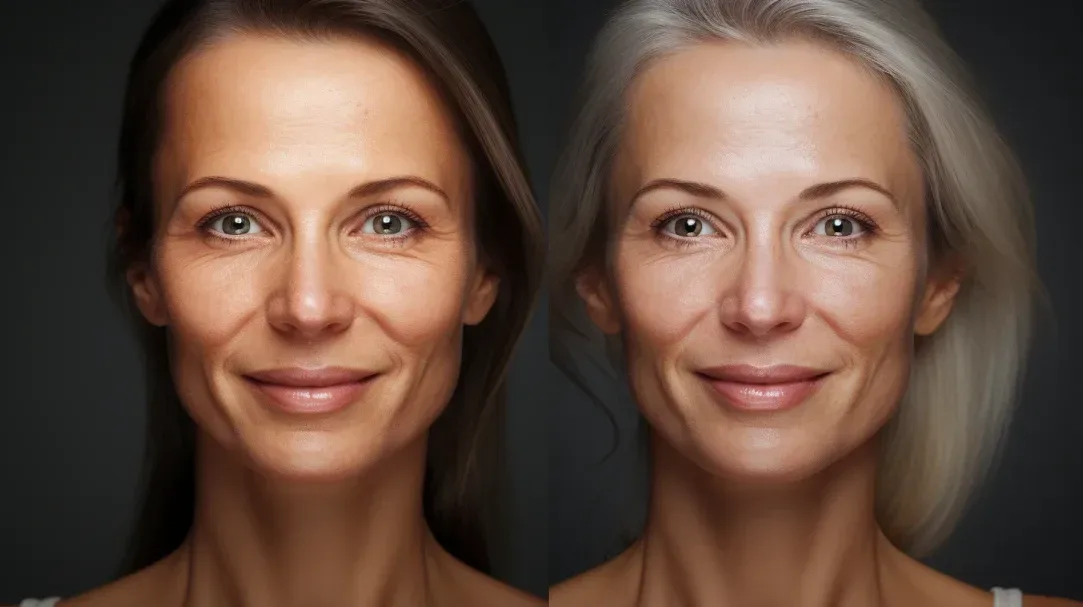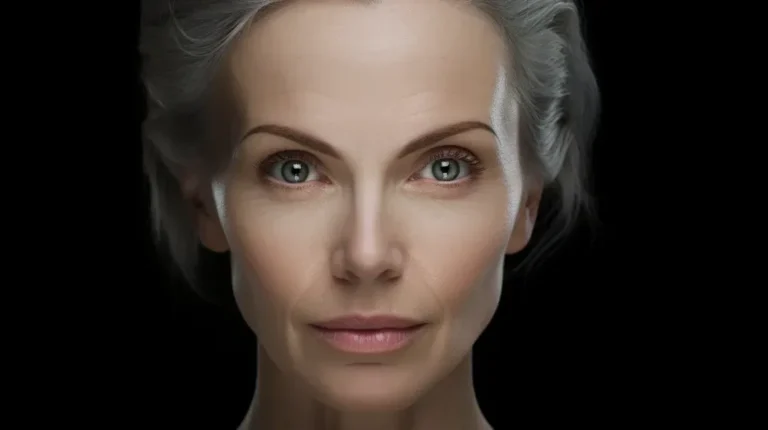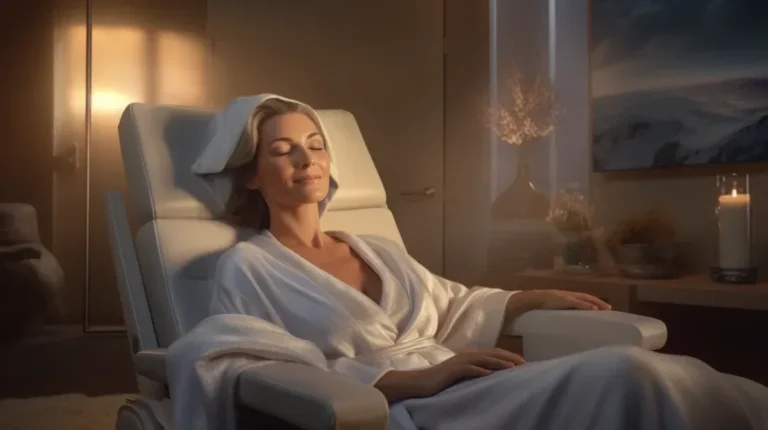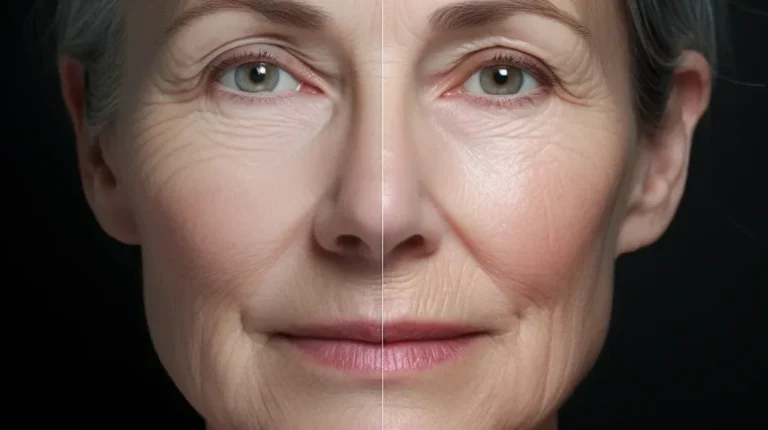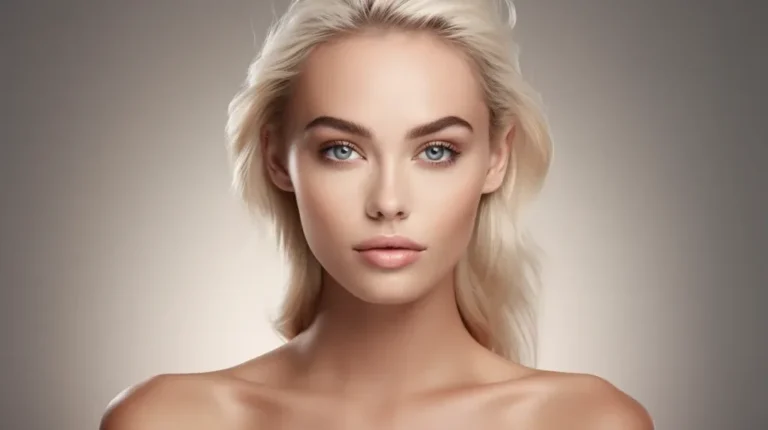What Is Botox Really Used For?
Curious about the many uses of Botox? How can it treat migraines or muscle spasms? In this article, we’ll explore the diverse applications of Botox beyond just reducing wrinkles.
From managing medical conditions like hyperhidrosis to providing relief for chronic migraines, Botox has proven to be a versatile treatment option. We’ll also discuss its role in non-surgical facial rejuvenation and its safety and effectiveness in different applications.
By the end, you’ll understand botox uses and how it can benefit you.
Key Takeaways
- Botox has many cosmetic applications, including reducing wrinkles, rejuvenating, and improving facial symmetry.
- Botox is also used for various medical conditions, such as chronic migraines, muscle spasms, and hyperhidrosis (excessive sweating).
- Health authorities have approved the efficacy and safety of Botox for specific medical uses, and ongoing research continues to explore its effectiveness in other areas.
- Patient demographics show a growing trend toward using Botox for cosmetic and medical reasons, emphasizing personalized treatments and patient satisfaction.
Botox for Cosmetic Purposes
Botox, primarily renowned for its efficacy in wrinkle reduction, is a highly sought-after solution in non-surgical facial rejuvenation. This cosmetic treatment temporarily immobilizes the muscles responsible for wrinkle formation, promoting a smoother, more youthful skin appearance. Commonly targeted areas for Botox injections include the forehead, the region between the eyebrows, and around the eyes.
This procedure stands out for its convenience and minimal recovery time, making it an attractive option for individuals aiming to diminish the visibility of fine lines and wrinkles. Botox’s reputation for safety and effectiveness has cemented its position as a go-to treatment for those desiring a rejuvenated facial appearance.
Beyond its cosmetic applications, Botox also plays a significant role in various medical treatments, which will be explored in subsequent sections. This expansion into medical uses demonstrates Botox’s versatility and evolving role in cosmetic and therapeutic contexts.
Medical Applications of Botox
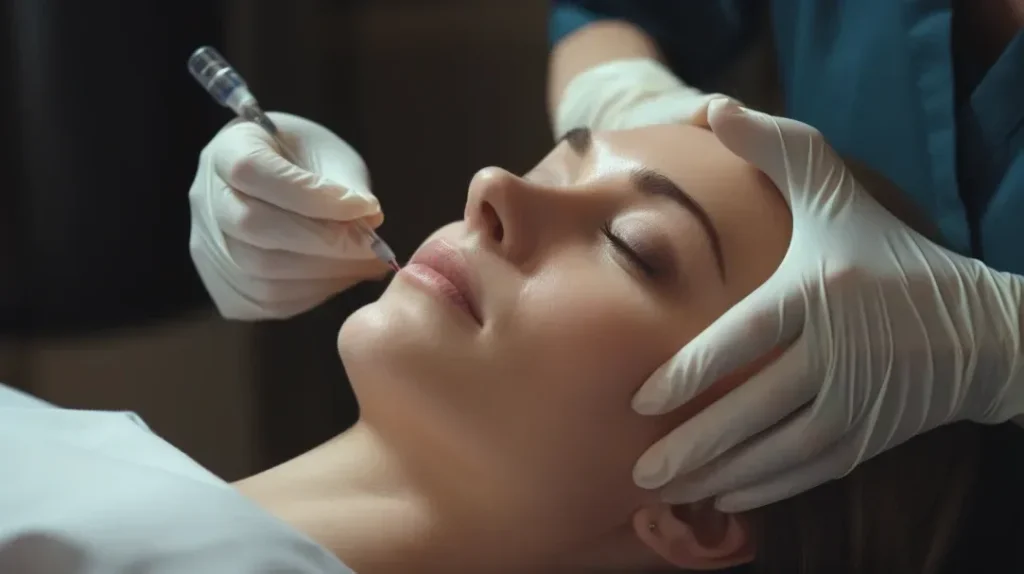
Botox, commonly recognized for its cosmetic benefits, is also significant in medicine. Health authorities have approved Botox for treating various medical conditions, showcasing its versatility beyond aesthetic enhancements. To fully appreciate the scope of Botox’s medical applications, it’s essential to examine its efficacy and safety profiles in these contexts.
Approved Medical Uses of Botox
Botox’s therapeutic applications extend to several medical conditions, as authorized by health authorities:
- Muscle Spasms: Botox injections are approved for managing muscle spasms, notably in conditions like cervical dystonia, which causes involuntary muscle contractions.
- Chronic Migraines: Botox is a sanctioned treatment for chronic migraines, where it’s administered in specific head and neck areas to reduce the frequency and severity of migraine episodes.
- Hyperhidrosis (Excessive Sweating): Botox effectively treats hyperhidrosis by obstructing the nerve signals responsible for sweat gland stimulation, thereby curbing sweat production.
- Overactive Bladder: For individuals with overactive bladder symptoms, Botox relieves bladder muscles, thus reducing urinary urgency and frequency.
These examples illustrate the breadth of Botox’s medical applications, emphasizing the need for professional consultation to determine its suitability for various health conditions.
Efficacy and Safety in Medical Treatments
Extensive research and approvals from health authorities back Botox’s role in medical treatments. It operates by inhibiting nerve signals that trigger muscle contractions, offering relief in conditions like muscle spasms and migraines. The long-term use of Botox in these medical contexts is generally well-received, with a safety profile characterized by minimal adverse effects. However, individual responses to Botox can vary, underscoring the importance of seeking medical advice to ascertain its appropriateness for specific health issues.
Having explored Botox’s medical applications, we will now delve into its widely recognized cosmetic uses, particularly in wrinkle reduction and facial rejuvenation, to provide a comprehensive understanding of its diverse benefits and functionalities.
Botox for Wrinkle Reduction
Botox is commonly used to effectively reduce wrinkles by targeting specific facial muscles. Here are four key points to understand about Botox for wrinkle reduction:
- Botox works by temporarily blocking the nerve signals that cause muscle contractions, leading to wrinkles forming.
- Botox is most commonly used to treat dynamic wrinkles caused by repetitive facial movements such as frowning or squinting.
- The most common areas treated with Botox for wrinkle reduction include the forehead, crow’s feet (lines around the eyes), and the glabella (vertical lines between the eyebrows).
- Results from Botox treatments for wrinkle reduction typically last for about three to four months.
By targeting specific facial muscles, Botox can effectively reduce the appearance of wrinkles and give you a more youthful appearance.
However, Botox isn’t just limited to wrinkle reduction. It also has other medical uses, such as muscle relaxation, which we’ll discuss in the next section.
Botox for Muscle Relaxation
Botox isn’t only used for cosmetic purposes and muscle relaxation in certain medical conditions.
It’s commonly used to treat muscle spasms, such as those caused by cervical dystonia or spasticity.
Botox injections can provide relief by temporarily paralyzing the affected muscles, allowing for improved function and reduced pain.
Benefits of Botox
Experience the excellent benefits of Botox for muscle relaxation. Botox, also known as botulinum toxin type A, has proven to be highly effective in various applications. Here are four benefits of using Botox for muscle relaxation:
- Reduction of muscle spasms and stiffness: Botox injections can help alleviate muscle spasms and stiffness caused by neurological conditions such as cervical dystonia or spasticity.
- Relief from chronic migraines: Studies have shown that Botox injections can significantly reduce the frequency and severity of chronic migraines, providing long-lasting relief.
- Treatment for hyperhidrosis (excessive sweating): Botox can be used to block the nerve signals that stimulate sweat glands, resulting in a reduction in excessive sweating.
- Non-surgical alternative: Botox offers a non-surgical option for muscle relaxation, providing a minimally invasive treatment with quick results.
These benefits make Botox an attractive option for individuals seeking muscle relaxation. However, are there alternative treatments for muscle relaxation that you should consider?
Alternative Muscle Relaxation Treatments?
If you’re considering alternative muscle relaxation treatments, there are options to explore beyond Botox. While Botox is commonly known for its cosmetic applications in reducing wrinkles, it can also be used for muscle relaxation in various medical conditions.
However, if you’re looking for alternatives, other treatments are available. One option is physical therapy, which focuses on strengthening and stretching specific muscles to promote relaxation.
Another alternative is oral medications like muscle relaxants, which can help reduce muscle tension and spasms. Additionally, some individuals find relief through massage therapy or acupuncture.
It’s essential to consult with a healthcare professional to determine the most suitable alternative muscle relaxation treatment for your specific condition.
Botox for Chronic Migraine Management | Botox Uses
Managing chronic migraines can be significantly improved with the use of Botox injections. Botox for chronic migraine management has gained popularity due to its effectiveness in reducing the frequency and severity of migraines. Here are some key points to understand about using Botox for chronic migraine management:
- Botox injections for chronic migraines involve targeting specific muscles in the head and neck to reduce tension and alleviate migraine symptoms.
- The treatment is typically administered every 12 weeks, with multiple injections in specific areas.
- Botox works by blocking the release of certain chemicals involved in pain transmission, providing relief for chronic migraine sufferers.
- Clinical studies have shown that Botox can significantly reduce the number of headache days and improve the quality of life for patients with chronic migraines.
Transitioning into the next section, Botox offers an effective solution for another medical condition: hyperhidrosis treatment.
Botox for Hyperhidrosis Treatment
When treating hyperhidrosis, Botox injections offer an effective solution for excessive sweating. Hyperhidrosis is a medical condition characterized by excessive sweating that affects various body areas, such as the underarms, palms, and feet.
Botox, or botulinum toxin type A, works by blocking the nerve signals that stimulate sweat production, significantly reducing sweat production in the treated areas. The procedure involves injecting small amounts of Botox into the skin using a fine needle.
The effects of Botox for hyperhidrosis treatment can last for several months, providing relief from excessive sweating. It’s a safe and well-tolerated treatment option with minimal side effects such as temporary muscle weakness or pain at the injection site.
Dermatologists or other qualified healthcare professionals typically perform Botox injections for hyperhidrosis.
Fda-Approved Uses of Botox
Botox, widely recognized for its aesthetic benefits, has garnered approval from the U.S. Food and Drug Administration (FDA) for several medical applications, showcasing its multifaceted therapeutic potential. This expansion of Botox’s utility into various medical areas emphasizes its versatility and effectiveness beyond mere cosmetic use. The following are key FDA-approved medical applications of Botox:
- Chronic Migraine Treatment: Botox has proven effective in mitigating the intensity and frequency of migraines in adults. Regular injections can lead to a significant decrease in the occurrence of chronic migraines.
- Muscle Spasm Management: Utilized in treating muscle spasms, Botox offers relief in different body parts, including the neck (cervical dystonia), facial muscles, and limbs, addressing various neuromuscular conditions.
- Hyperhidrosis Control: In cases of excessive sweating, particularly underarm hyperhidrosis, Botox injections can significantly reduce sweat production, improving the quality of life for those affected by this condition.
- Overactive Bladder Symptom Relief: Botox is beneficial in alleviating symptoms of overactive bladder, such as urinary incontinence and urgency, by relaxing the bladder muscles to reduce frequent urination.
These FDA-approved indications of Botox illuminate its extensive role in medical treatments, offering solutions for a range of conditions from neurological disorders to urinary incontinence. It’s critical for individuals considering Botox for these conditions to consult healthcare professionals to assess its suitability and potential benefits for their specific medical needs. This perspective on Botox’s medical applications underscores its importance in contemporary therapeutic practices, transcending its reputation as merely a cosmetic agent.
Botox in Aesthetic Dermatology
Botox has revolutionized aesthetic dermatology with its effective wrinkle-reduction capabilities, offering a non-surgical route to achieving smoother, younger-looking skin. By temporarily relaxing specific facial muscles, Botox diminishes the appearance of wrinkles, earning high satisfaction rates among patients for its noticeable results.
Techniques for Wrinkle Reduction with Botox
Botox’s application in aesthetic dermatology encompasses a variety of techniques tailored to address individual aging skin concerns:
- Precise Botox Injections: Administering Botox in small doses to target facial muscles relaxes them, visibly reducing wrinkles.
- Focusing on Key Areas: Botox is adept at treating common wrinkle-prone areas like forehead lines, frown lines, crow’s feet, and lip lines.
- Preventative Strategy: Many opt for Botox as a proactive measure to delay wrinkle formation, maintaining a youthful appearance over time.
- Customizable Treatment Plans: Botox treatments are adaptable to individual needs and goals, ensuring personalized care in wrinkle management.
These techniques highlight Botox’s versatility in aesthetic dermatology, offering tailored solutions for aging skin.
Benefits of Botox in Aesthetic Dermatology
Botox’s role in dermatology extends beyond simple wrinkle reduction, offering multiple benefits:
- Effective Wrinkle Management: Targeted injections substantially reduce wrinkles and fine lines, rejuvenating the skin.
- Non-Surgical Rejuvenation: As a minimally invasive alternative to surgery, Botox appeals to those seeking less intensive cosmetic procedures.
- Preventative Aging Control: Botox’s preventative applications can inhibit the early development of wrinkles, preserving a youthful complexion.
- Safe and Minimally Invasive: Botox’s safety profile makes it a preferred choice for patients desiring a less invasive approach to skin aging.
High Patient Satisfaction Rates
Patients opting for Botox in aesthetic dermatology report high satisfaction, attributable to several factors:
- Visible Wrinkle Reduction: The effective diminishment of wrinkles and fine lines with Botox leads to enhanced patient satisfaction.
- Quick and Low-Impact Treatments: The swift and straightforward nature of Botox procedures, with minimal downtime, is highly valued by patients.
- Natural-Looking Outcomes: Botox’s ability to offer subtle yet significant improvements without an artificial look is a key satisfaction driver.
- Durable Results: Many enjoy the lasting effects of Botox, appreciating the extended periods between treatments.
In summary, Botox’s role in aesthetic dermatology is multifaceted, offering effective wrinkle reduction, preventative aging measures, and customizable treatments, all contributing to its high patient satisfaction rates. This comprehensive view of Botox’s application in dermatology highlights its significance as a leading choice for non-surgical facial rejuvenation.
Botox for Medical Conditions
Botox is widely used in the medical field to treat various conditions. Here are some medical conditions for which Botox is commonly used:
- Neurological disorders: Botox is FDA-approved for the treatment of chronic migraines, muscle spasms, and cervical dystonia. It works by blocking the nerve signals that cause muscle contractions, relieving pain, and reducing muscle stiffness.
- Hyperhidrosis: Botox injections can help manage excessive sweating by blocking the release of a neurotransmitter called acetylcholine, which stimulates sweat glands.
- Overactive bladder: Botox injections into the bladder muscle can help reduce urinary urgency and frequency in patients with overactive bladder.
- Eye conditions: Botox treats certain eye muscle disorders, such as strabismus and blepharospasm, by relaxing the affected muscles and improving eye alignment.
Botox has proven to be an effective treatment option for these medical conditions, offering relief and improving the quality of life for many patients.
Frequently Asked Questions
Are There Any Long-Term Side Effects of Botox Treatment?
There aren’t any long-term side effects of Botox treatment. It’s important to note that Botox is generally safe when administered by a trained healthcare professional. However, individual experiences may vary, so consult your provider for personalized information.
How Often Should Botox Injections Be Administered for Optimal Results?
Botox injections should be administered based on your individual needs and goals for optimal results. Consult with a healthcare professional to determine your specific treatment plan’s ideal frequency and timing.
Can Botox Be Used to Treat Neurological Disorders Other Than Muscle Spasms?
Botox can be used to treat various neurological disorders beyond muscle spasms. It has been approved for chronic migraines and has shown potential in managing conditions like dystonia and spasticity.
What Are the Potential Risks and Complications Associated With Botox Injections?
The potential risks and complications associated with Botox injections include temporary bruising, headache, and drooping eyelids. It’s essential to consult with a healthcare professional to understand the specific risks based on your circumstances.
How Does Botox Compare to Other Non-Surgical Facial Rejuvenation Treatments in Terms of Effectiveness and Safety?
Are you looking for a safe and effective non-surgical facial rejuvenation treatment? Compare Botox to others regarding effectiveness and safety. Find out which option is best for you.
Conclusion
In conclusion, Botox isn’t just for cosmetic purposes. It has proven to be a versatile treatment option, effectively managing various medical conditions such as chronic migraines and muscle spasms.
With its quick results and high efficacy, Botox has also become famous for non-surgical facial rejuvenation. So whether you’re seeking wrinkle reduction or relief from medical conditions, Botox offers a safe and effective solution.
Step into the world of Botox and discover the transformative benefits it can provide.
